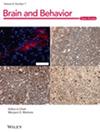When Silence Breaks: The Influence of Pure Tones and White Noises on Conditioned Flight Responses
Abstract
Background
The flight response is part of the repertoire of adaptive behavioral responses all animals possess and use to face threats coming from their environment. Compared to the other responses, flight requires a high degree of physical effort and is thought to be related to those active coping strategies that can be observed in several psychopathological conditions, including anxiety and depressive disorders. In recent years, a new protocol of auditory fear conditioning has been shown to induce a learned flight response in mice, based on a conditioned stimulus that includes pure tones and white noise, the serial compound stimulus (SCS).
Methods
In this review, we examine the effects of stimulus characteristics in fear learning paradigms, particularly in the context of the recently developed SCS paradigm. We will discuss how factors such as conditioned stimulus (CS) modality (e.g., tone versus white noise), stimulus salience, and the temporal relationship between stimuli influence conditioned flight responses.
Results
For the study of both physiological and maladaptive behaviors, fear conditioning still represents the paradigm of choice, e.g., for the modeling of psychiatric conditions such as post-traumatic stress disorder or phobias. Albeit its relevance in this context, up to now only a few studies have focused on developing procedures for eliciting conditioned flight responses in the laboratory, in favor of freezing/immobilization, the so-called fright response. The SCS protocol poses new interesting questions on the impact of noises and other stimuli on learning and behavioral responses.
Conclusion
The discovery of SCS already led to interesting findings in the neurobiology of fear learning and shows great potential for the study of maladaptive responses in animal models of psychopathology.

 求助内容:
求助内容: 应助结果提醒方式:
应助结果提醒方式:


